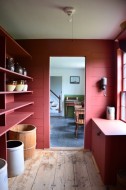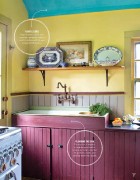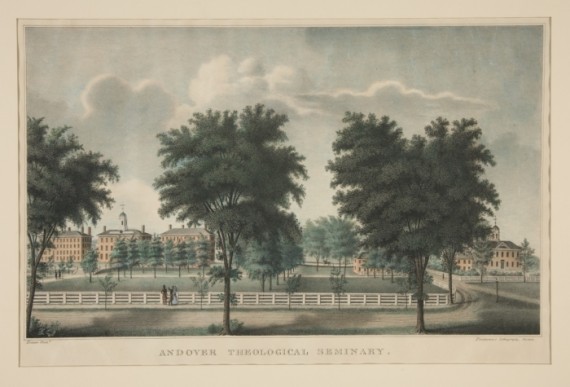
DIVING INTO HISTORY (PART 4)
November 11, 2022
On the 17 of March 1825, Mary Richardson would bear another daughter, Mary Lydia. This birth was followed in late November of 1827 by a son, George Nelson. Two years later, as a member of the Committee of the First Congregational Society (the Unitarian Church), Erastus would find himself embroiled in a controversy that had been festering in Eastport for all of ten years.
In 1811, a group of individuals formed an association to purchased land, and contracted with Moses Hovey of Machias to build a Congregational church; "equal to the Tuscan order of architecture, sixty feet long, forty-six feet wide, and twenty-eight feet high, with a cupola dome and short spire, an arched ceiling, galleries, and a handsome sounding-board over the pulpit.”
Hovey had nearly finished preparing the post and beam frame in Machias when the War of 1812 broke out. In the Fall of 1818, not long after the British withdrawal, ground was finally broken on Shackford Street for the new edifice. The following agreement appears to have been the source of consternation.
Moose Island, June 4th, 1818. We the subscribers form ourselves into a company for the purpose of purchasing a lot and building a Meeting House for the use of a Congregational minister. We further agree to take and pay for the number of shares affixed to our names estimated at one hundred dollars each share - and provided the cost exceeds or falls short of such estimate we are to pay in proportion to our shares. Bonds or notes are to be given by each subscriber for the amount of his subscription to such person or persons as may be appointed for that purpose. Any profit that may arise on the sale of pews is to be appropriated for the use of the congregation, as a majority of the subscribers may direct. We further agree that the building is for a Congregational Minister, such as a majority of the subscribers may agree to hire or settle for a limited time or for life, without reference to any party or particular denomination of Congregationalists. And we further agree to be bound by the decision of the majority of the subscribers in all matters pertaining to the premises.
There were forty-two who signed the document.
Once the church was completed, a majority of the subscribers voted to send to Cambridge for a Unitarian minister. Some in the minority, having had the expectation of an orthodox minister from the Andover Theological Seminary, withdrew in dismay; choosing to worship with the Baptists.
This occurred against a larger backdrop, the long simmering tensions between the conservative, orthodox, Calvinist wing of the Congregational church the liberal or progressive wing. A reaction to an over emphasis on rational thinking spawned by the Age of Enlightenment and the Great Awakening, the liberals sought a return to emotion, the awe and wonder, so to speak. They rejected many of the church teachings that they felt were not biblical in origin, most prominently the doctrine of the Trinity. Instead, they saw the deity as a singular unified entity, causing their critics to call them derisively, “Unitarians.” In the 16th and 17th centuries some of these ‘rebels’ were forced to recant, or even hung, for their heresy.
Eventually the two groups learned to coexist, that is, until the beginning of the 19th century. In New England things began to unravel and, in many places, the liberal Unitarians were forced out of the Congregational church. Andover Seminary was formed in 1807 when the orthodox Calvinists broke from the Liberals at Harvard. Known as the Unitarian Controversy, these forces were certainly in play in the little city of Eastport, in 1829.
On the 11 of January, 1828, the orphaned members of the First Congregational, with a new influx of parishioners, organized under the name of “the First Evangelical Congregational Church and Society of Eastport with Wakefield Gale, a graduate of Andover Seminary, in the pulpit. Gale had already been preaching in local churches for a number of years. A new house of worship was needed and raised on Middle Street, under the direction of Daniel Low, architect and builder. On February 29, 1829, the church was dedicated, with the Rev. Gale preaching the sermon; the pertinent portion is printed below.
This church was formed Feb 8, 1819, by Rev. Mr. Blood, of Buxport, agreeably to usage, and in conformity to the instructions given him by the Massachusetts Missionary Society. He formed and publicly declared it to be a church of Christ of the congregational order. It consisted of five persons - three males and two females. During the following season, efforts were made by the church and others, to erect a house of public worship. There efforts were successful. A house, in due time, was erected. But the church, with others, were disappointed. They wished for evangelical preaching. Instead of this - instead of a man of their choice, a Unitarian clergyman was obtained. By his efforts a church of that denomination was formed. As to the character of the transactions in those days we say nothing, willing that the grand revealing day should disclose the right and wrong of them. All could not be right. There was wrong somewhere. This church holding to the faith as they apprehended it was it was originally delivered to the saints, and disapproving of the measures, which had been taken relative to the new house, withdrew itself and worshiped with the Calvinistic Baptists in this town.
The accusations that Gale repeated had been swirling around town for years. Erastus Richardson had only just arrived in Eastport, when the seeds of controversy were planted. He was himself something of a liberal rebel, coming from a family whose pastor and close friend, Nathaniel Emmons, an ardent Calvinist, was the founder and first president of the Massachusetts Missionary Society and influential in the founding of Andover Seminary.
Erastus, as a member of the Committee of the First Congregational Society, along with Edward Ilsley and George Hobbs, distressed by accusations made but not supported, drafted a letter to Reverend Gale;
Eastport Feb. 24, 1829
Rev’d Sir,
In an address at the dedication of the house lately erected for the society under your charge, while detailing the rise and progress of your church, you alluded to the building of the south meeting house, in a manner which left upon the respectable strangers then present, an impression very injurious and dishonorable to members of the First Congregational Society in this town.
The undersigned, a committee, in behalf of said society have respectfully to request that you will furnish them with a copy of so much of your address upon that occasion, as embraced the remarks to which we refer.
We are, Sir, with due respect, Your most obed’t
Edward Ilsley, George Hobbs and Erastus Richardson.
Wakefield complied, but after many exchanges, an exasperated committee, finding no relief, threw up their hands and decided to publish their correspondences. Benjamin Folsom, the publisher of the Eastport Sentinel, was employed. They summed up their position in the preamble;
The substance of the accusation against us, as uttered from the pulpit and repeated from the press, is as follows: - That the South Meeting House in this town was projected and built by the church formed by Mr. Blood, assisted by such others as had been induced to join them - that the house was intended for this church - that the unitarian or first congregational society, had exerted themselves successfully to set aside the claims of this church - and that they now worship their God in a temple obtained by fraud and injustice…The only question at the moment is - are these charges true? Let the public be the judge.
You can read these letters online and decide for yourself.
(click photo to view larger image)
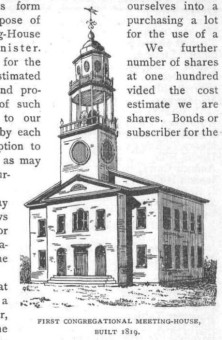
|

|
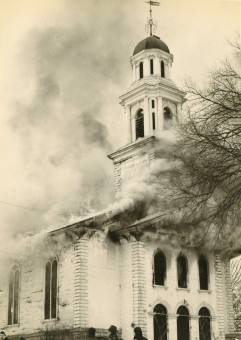
|

|
(comments = 0)
leave a comment

fineartistmade blog
A journal about home design, gardening, art & all things Maine. Read more...
- June 2025
- December 2022
- November 2022
- October 2022
- November 2021
- May 2020
- October 2019
- August 2019
- July 2019
- September 2018
- April 2018
- December 2017
- August 2017
- June 2017
- May 2017
- December 2016
- August 2016
- July 2016
- April 2016
- November 2015
- June 2015
- May 2015
- March 2015
- October 2014
- March 2014
- February 2014
- January 2014
- December 2013
- November 2013
- July 2013
- May 2013
- April 2013
- March 2013
- January 2013
- December 2012
- November 2012
- August 2012
- June 2012
- April 2012
- March 2012
- February 2012
- January 2012
- December 2011
- October 2011
- August 2011
- July 2011
- June 2011
- May 2011
- April 2011
- March 2011
- February 2011
- January 2011
- December 2010
- November 2010
- October 2010
- September 2010
- August 2010
- July 2010
- June 2010
- May 2010
- My Scandinavian Home
- Daytonian in Manhattan
- {frolic!}
- I Married An Irish Farmer
- Smitten Kitchen
- The Curated House
- even*cleveland
- Mary Swenson | a scrapbook
- Ill Seen, Ill Said
- Gross & Daley Photography
- Remodelista
- Abby Goes Design Scouting
- Mint
- the marion house book
- 3191 Miles Apart
- Svatava
- Katy Elliott
- Poppytalk
- Kiosk
- decor8
- KBCULTURE
- Lari Washburn


